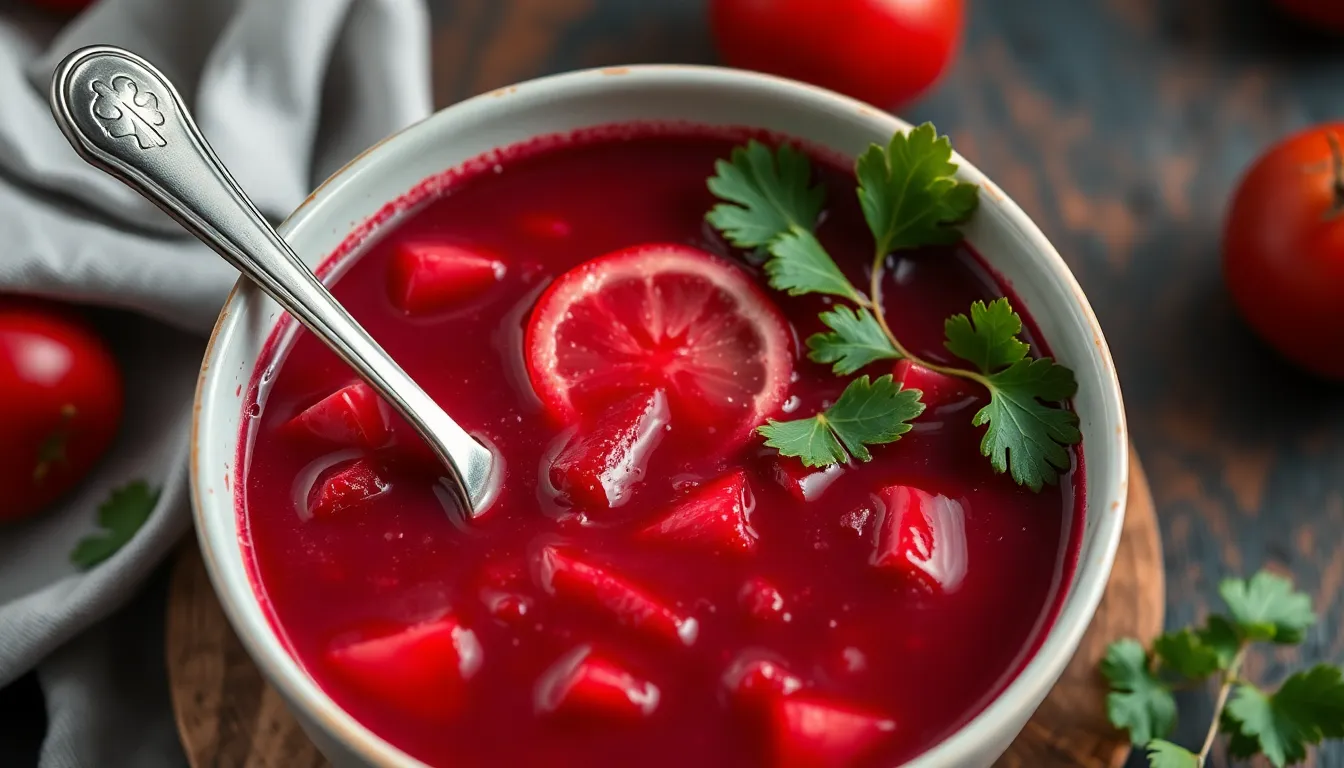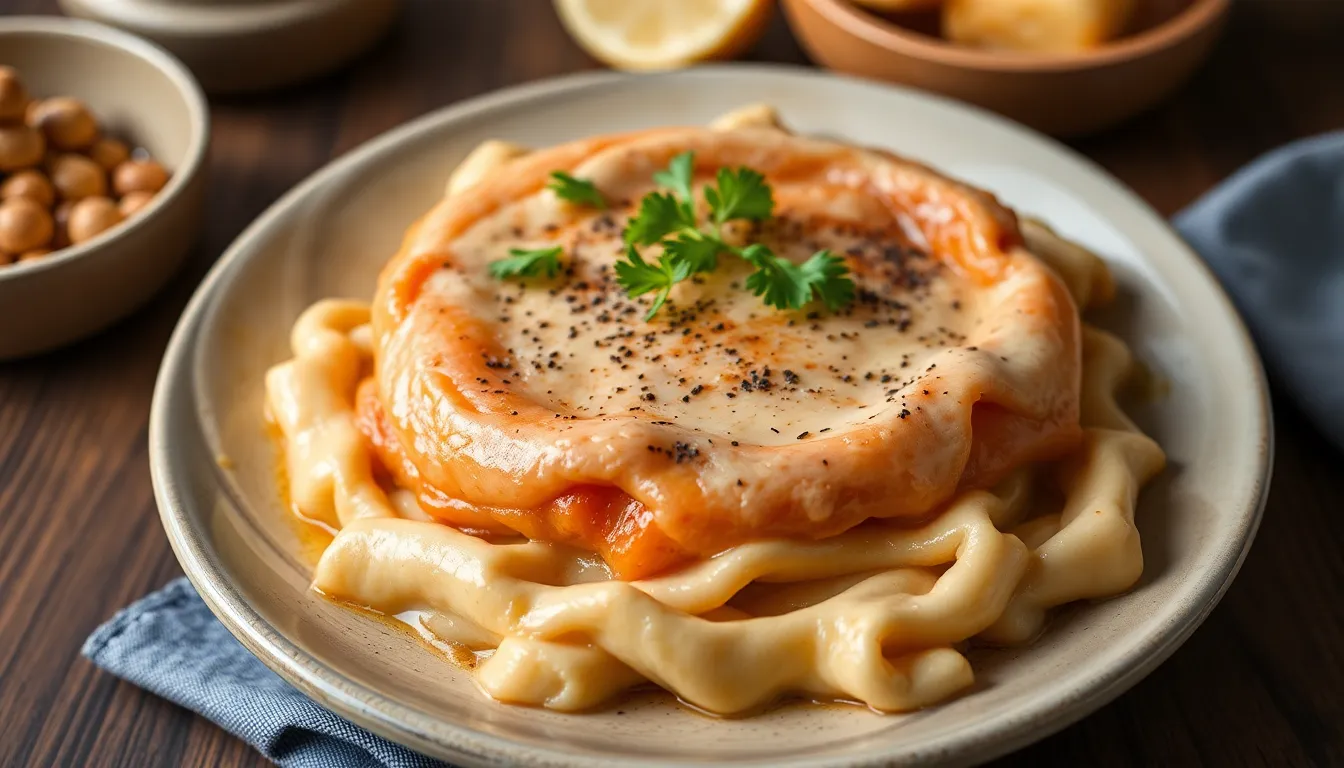From Pelmeni to Pirozhki: A Culinary Journey Through Russia’s Most Iconic Dishes
I. Introduction: The Heartbeat of Russian Cuisine
Russian cuisine is a vibrant tapestry woven from centuries of tradition, culture, and geographical diversity. The dishes are not just meals; they are a celebration of family heritage, often passed down through generations, each recipe telling a story of love, hardship, and adaptation.
Regional variations thrive, influenced by local ingredients and historical events. Like a rich novel, each dish is a chapter in Russia’s culinary history, offering glimpses into the lives of those who came before us. In this article, we will explore some of Russia’s most iconic dishes, including Pelmeni, Borscht, Blini, Pirozhki, and Shchi. Prepare for a flavorful journey that will inspire you to cook, taste, and share!
II. Pelmeni: The Dumpling Delight
A. History and Origins
Pelmeni, a delightful dumpling, has its roots deeply embedded in the Siberian cultures of the Ural Mountains. Originally created as a means of preservation, they were filled with meat and wrapped in dough, then frozen for consumption during harsh winters. Over the centuries, Pelmeni evolved, spreading across Russia and adapting to local tastes and ingredients.
B. Ingredients and Preparation
To craft authentic Pelmeni at home, you will need the following key components:
- Dough: Made from flour, water, and eggs.
- Fillings: Traditionally a mix of minced meat such as beef, pork, or lamb, often spiced with onions, garlic, and pepper.
Here’s a step-by-step guide to making Pelmeni:
- Prepare the dough by mixing flour, eggs, and water. Knead until smooth and let it rest.
- Prepare the filling by combining minced meat with finely chopped onions and spices.
- Roll out the dough thinly and cut it into circles.
- Place a teaspoon of filling in the center of each circle, fold over, and pinch to seal.
- Boil in salted water until they float to the surface, indicating they are cooked.
C. Serving Suggestions
Pelmeni can be served in various ways, but the classic accompaniments include:
- Sour cream: Adds a rich creaminess.
- Vinegar: Provides a tangy contrast.
- Fresh herbs: Such as dill or parsley for a burst of flavor.
D. Pelmeni Variations
| Region | Filling Types | Cooking Methods | Serving Styles |
|---|---|---|---|
| Siberia | Beef and pork mix | Boiled | With sour cream |
| Ural Mountains | Lamb | Fried | With vinegar |
| Central Russia | Chicken | Steamed | With broth |
| Far East | Vegetable mix | Boiled | With soy sauce |
III. Borscht: The Beetroot Marvel
A. The Cultural Significance of Borscht
Borscht is not just a soup; it’s a symbol of Slavic heritage and community. Originating in Ukraine and spreading throughout Eastern Europe, this beetroot marvel has numerous variations, reflecting the local ingredients and tastes of each region.
B. Mastering the Classic Recipe
To make a classic Borscht, gather the following ingredients:
- Beets
- Cabbage
- Carrots
- Potatoes
- Onions
- Vegetable or beef broth
- Salt and pepper
- Fresh dill and sour cream for serving
Follow these steps to create a flavorful Borscht:
- In a large pot, sauté onions, carrots, and beets until soft.
- Add broth and bring to a boil.
- Stir in cabbage and potatoes, cooking until tender.
- Season with salt and pepper, and let simmer to blend the flavors.
C. Variations to Explore
While the classic Borscht is cherished, here are some variations to try:
- Vegetarian Borscht: Exclude meat and use vegetable broth.
- Meat-based Borscht: Add chunks of beef or pork for a heartier soup.
- Regional Twists: In Poland, you might find Borscht with mushrooms or sauerkraut.
IV. Blini: The Versatile Pancakes
A. The Tradition Behind Blini
Blini are thin pancakes that have become a staple during Russian festivals such as Maslenitsa, celebrating the end of winter. These delightful crepes symbolize the sun and are often served with a variety of fillings, from savory to sweet.
B. Crafting the Perfect Blini
To make Blini, you will need:
- Flour
- Milk
- Eggs
- Yeast (for leavened Blini)
- Salt and sugar
Here’s how to create them:
- Mix the ingredients to form a smooth batter.
- Let it rest to allow the yeast to activate (if using).
- Pour a ladle of batter onto a hot skillet and cook until golden on both sides.
C. Sweet vs. Savory: The Topping Dilemma
Blini can be topped with a myriad of delicious options:
- Savory: Caviar, smoked salmon, or sour cream.
- Sweet: Jam, honey, or condensed milk.
V. Pirozhki: Hand-Held Pastries with a Story
A. A Look into Pirozhki’s History
Pirozhki are delightful hand-held pastries that have become synonymous with Russian comfort food. Historically enjoyed as a quick snack or lunch, they encapsulate the creativity of Russian home cooking, filled with an assortment of ingredients.
B. Dough and Filling: A Perfect Match
The dough for Pirozhki can be made from yeast or shortcrust pastry, and the fillings can vary widely:
- Potatoes and onions
- Cabbage and mushrooms
- Meat mixtures
- Sweet fillings like fruit jam or cottage cheese
C. Baking vs. Frying: The Great Debate
When it comes to cooking Pirozhki, there’s a friendly debate between baking and frying:
| Method | Pros | Cons |
|---|---|---|
| Baking | Healthier option, easier clean-up | Can be dry if overcooked |
| Frying | Crispy texture, rich flavor | More oil and calories, can be messy |
VI. Shchi: The Comforting Cabbage Soup
A. An Introduction to Shchi
Shchi is a traditional Russian cabbage soup that has been a comforting staple for centuries. Its simplicity and heartiness make it a favorite in households across the nation, often enjoyed during cold winters.
B. Cooking Shchi from Scratch
Essential ingredients for Shchi include:
- Cabbage
- Potatoes
- Carrots
- Onions
- Meat (beef or chicken, optional)
To cook Shchi:
- In a large pot, sauté onions and carrots until soft.
- Add meat (if using) and brown it.
- Add chopped cabbage and potatoes, then cover with water and bring to a boil.
- Season with salt and pepper, simmering until everything is tender.
C. Variations Based on Seasons and Ingredients
Shchi can be adapted based on seasonal ingredients:
- Winter Shchi: Hearty and filled with root vegetables.
- Spring Shchi: Lighter, incorporating fresh herbs and young cabbage.
VII. Conclusion: The Tapestry of Russian Flavors
The dishes we have explored in this culinary journey through Russia’s iconic cuisine are more than just recipes; they are a reflection of the country’s history, culture, and the warmth of home cooking. Each dish holds a unique place in the hearts and homes of those who cherish them.
We encourage you to try these recipes at home, experiment with variations, and perhaps create your own family traditions around these beloved dishes. Share your experiences and stories related to Russian cuisine in the comments below—let’s celebrate the beauty of cooking together!
VIII. Additional Resources
If you’re eager to dive deeper into Russian cooking, here are some recommended cookbooks and resources:
- The Russian Cookbook by Anne Volokh – A comprehensive guide to traditional recipes.
- Please to the Table: The Russian Cookbook by Anya von Bremzen – Offers authentic recipes and cultural insights.
- Online Forums and Communities: Join cooking forums to share tips and tricks with fellow enthusiasts.




